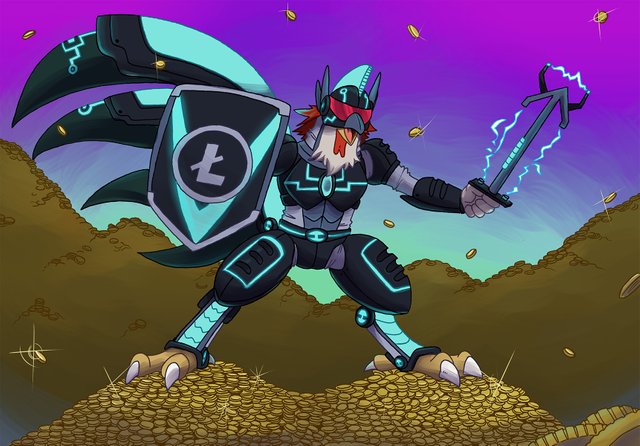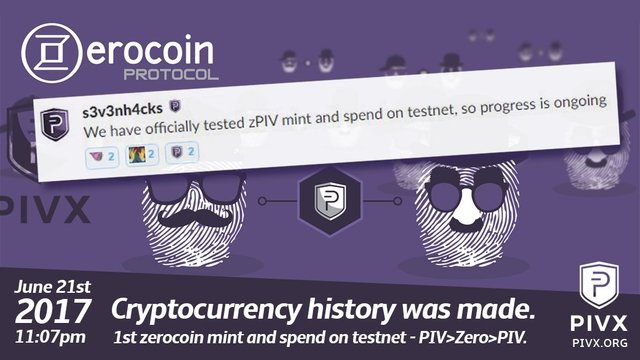CryptFolio: The Basics of Crypto Research - Spotting A Winner [Part 2]
Ever wondered how to carry out the basic research on a coin you’re looking to invest in? Well, then this guide is for you. This is the second part, if you haven’t read the first I highly suggest you go and read it first! For those of you that did and are here to catty on the learning, here’s a quick recap of what we discussed in the first portion of the guide:
- Research is the key to success in investing in crypto. If you don't know your stuff about the coins you've got money on you're not investing, that my friend, is called gambling. You may still get lucky and win, but you increase your chances if you know what you're investing in!
- For the love of God use coinmarketcap.com!
- Avoid coins that are traditionally pump'n'dump coins. Now this is difficult to do as a large number are successfully pumped because they are valid investments; PIVX springs to mind as an example of a very good investment with a history of huge pump'n'dumps!
- Keep notes, but keep succinct notes. Don't write down everything you come across, but definitely keep notes of both the green flags and the red flags!
- Spend some time on the social media platforms that the project uses. Don't just read the posts, but read between the lines of the post. If they are talking about price, why aren't they talking about the development?
- At least skim the whitepaper. As I said fully reading every whitepaper is completely unreasonable. If you decide to invest you can always go back and read it in detail later. For now just make sure you have a general understanding of the aims of the project and why the items on the roadmap will help achieve these.
So in the last guide we left off at the stage where you read the official documentation. It can be either super boring or super interesting depending on who you are as a person. For me, this changes from coin to coin, for example, I raced through Bitcoin’s and Ethereum’s whitepapers, other than a coffee break I didn’t stop, I was truly enthralled. However, I tried reading Ripple’s whitepaper and wow did I struggle. It took me a long time; I couldn’t even particularly explain to you why either, the time just seemed to drag.So I’m happy to inform you that the next step can be a lot more interesting!

Why, you ask? Well simple, for the next stage is to look at the community. Depending on what sort of person you are, you can have a lot of fun here! Now I’m not recommending you jump onto their Slack or Reddit and start trolling, but if you have any concerns about the projects, something you don’t think quite adds up, it’s in these places you should be asking them! A fair few of the investors may get defensive if you start pointing out holes in where they’ve placed their money, but the developers and long-term investors <em>should</em> be happy to discuss these with you. Just be sure to remain polite and not get drawn into an aggressive keyboard dual, investment analysis needs to be an emotionless decision. Don’t miss out on a good investment simply because some dick got aggressive with you when you asked a reasonable question. Although, if you are asking what seems to be a perfectly logical question and you are met with a barrage of abuse, you may want to be asking yourself <strong><em>why?</em></strong>
At this stage you’re also going to want to pay a lot of attention to the topics being discussed by the community. The same rule applies here as does with the social media analysis, lots of price discussion is generally bad, development discussion is good. Be careful though, a lot of projects purposefully split up these two conversations, and will have one place for trading and one for tech. Make sure you are in the right place! You can usually find links to where the community hangs out on the official website of the project.
I’m not particularly tech-minded, but I find a great place to look when I’m in this stage of investment analysis is the GitHub page for the project. It gives you an insight into how much deveopmental work is going into the project. Now take this with a grain of salt as it only provides an <em>insight</em>. Some projects use private repos for most of their coding and only add finished articles to GitHub, some stages of projects don’t involve much code-writing etc. However, if you’ve been getting red flags across the board up until this point and the GitHub provides another, well…

Carrying on the worked example from the first section of this guide, Ripto Bux (RBX), I got a definite red flag here. The Reddit had a handful of subscribers, I tried posting and got no response at all, I then tried to find the GitHub page and couldn’t find anything there either! RBX is a fairly young project so a lack of community involvement/activity can be excused to some extent, however, it’s definitely something that makes the investment seem riskier and is worth keeping an eye on going forward.
Next we move onto the promotion aspect. I work in Digital Marketing so branding and promotion is something to which I pay a lot of attention. Ultimately, adoption won’t happen if no one knows the advantages of the coin; all you have to do is look at the big coins to see how important promotion is. Bitcoin has the first mover advantage, for many Bitcoin is synonymous with ‘cryptocurrency’. Ethereum has Vitalik Buterin, a charismatic spokesman revered by the community. Litecoin has Charlie Lee and all the ‘Arise Chikun’ memes. These things may seem inconsequential, but, at the end of the day, strong communities shouting loudly will draw attention to the projects.

If you look at the business world, there are a number of promotional options available to a company looking to grow. For simplicity, let’s break this up into two separate approaches; and let’s call these the <em>‘tangible leader’</em> and the <em>‘content leader’</em> approaches. The <em>‘tangible leader approach’</em> can be used to describe those companies which use a person to embody their brand. In business terms, we would be talking about your Virgin (Richard Branson), Apple (Steve Jobs), and Smart Water (Jennifer Aniston). In crypto terms the obvious examples include Ethereum, Litecoin, and even Brendan Eich’s Basic Attention Token. These coins will rely heavily upon these people for their promotion and, ultimately, their adoption. Much like with celebrity endorsements, the risks with this approach is that any damaging of the person’s reputation will also affect the brand (Sharapova and Tiger Woods jump to mind here…).

On the other hand, the <em>content leader approach</em> is arguably less likely to gain traction, but removes some of the risks of associating a face with a brand. This involves a project relying almost entirely on content, either written or graphical, for promotion. Both Dash and PIVX are solid examples of this. The communities are really firmly behind their coins and do everything they can to promote them.

When analysing the promotion element of a coin you’re looking to answer a number of questions. Does the coin do <em>any</em> promotion? Do you agree with their promotion approach? Not every <em>tangible leader </em> is a good one, sometimes a person chosen for this role can do more harm than good. I’d recommend only putting your money in a project where the promotion entices you to do so, if not, why would anyone else?
This is largely a subjective opinion. Few coins do much in the way or promotion outside of social media, so the promotion of cryptos hasn’t been around long enough for a list of best practices to be developed. This section really comes down to <em><strong>you</strong></em>. If you are liking what you are seeing, green flag it, if not, consider putting a red flag. RBX does very little promotion, almost non-existent at this moment in time. For me, this is a huge red flag. As I said, I work in Marketing, I live and breath promotion, so to see it neglected worries me a lot.
I’m going to close this section here. The next section is going to cover the process of converting this information into an actual investment decision; thus, it would be best to deal with it all in one go and I’ve already rambled on for a while! What do you think? Have you learnt anything new? Anything else you look for when investing in a coin? Let me know in the comments below! Remember to click through and follow to ensure you don't miss the follow-up sections of the basics of crypto research!
---
This is part of a super regular segment I'll be doing, to make sure you don't miss out click through to my profile and follow me! Let me know in the comments below if you do, I'd appreciate it! Also, got any comments, questions or suggestions fire those at me too!
If you fancy sending some appreciation in the form of ETH of ERC20 tokens they'd be much appreciated at jcooper7.eth
Disclaimer: For legal reasons, this is not intended as advice, I'm happy playing with fire with my own money, I do not by any means suggest you do the same moves I do. I will, however, be posting them, and the reasons here, and if you choose to follow me, then sweet!
Congratulations! This post has been upvoted from the communal account, @minnowsupport, by jhcooper7 from the Minnow Support Project. It's a witness project run by aggroed, ausbitbank, teamsteem, theprophet0, and someguy123. The goal is to help Steemit grow by supporting Minnows and creating a social network. Please find us in the Peace, Abundance, and Liberty Network (PALnet) Discord Channel. It's a completely public and open space to all members of the Steemit community who voluntarily choose to be there.
If you like what we're doing please upvote this comment so we can continue to build the community account that's supporting all members.
Follow back me :)